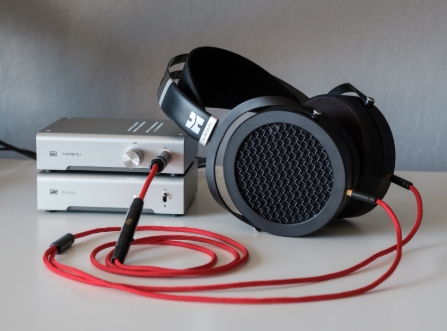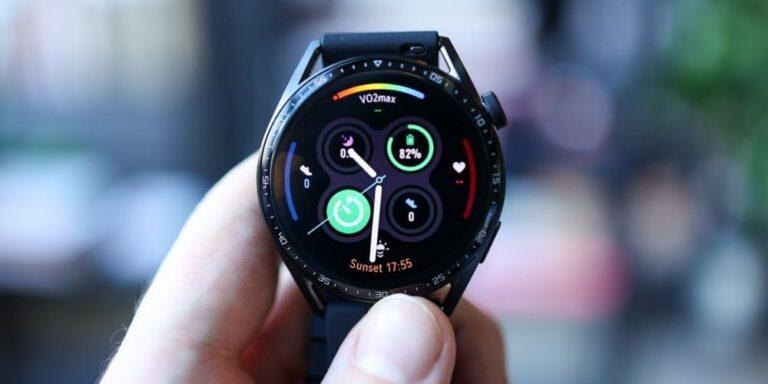What Are Audiophile Headphones: Key Differences from Regular Headphones
Audiophile headphones are designed for one core purpose—pure, accurate sound reproduction. Unlike standard consumer headphones, these are crafted with high-end components and tuned for audio fidelity. They appeal to music enthusiasts, studio professionals, and anyone seeking an immersive listening experience. The key differences lie in their sound accuracy, build quality, usage intent, and accessory requirements. Understanding these distinctions helps buyers choose the right headphones based on their listening habits and expectations. Let’s explore how audiophile headphones stand apart from regular ones.

Sound Quality and Audio Performance
Audiophile headphones aim to reproduce music exactly as recorded. The focus is on detail, balance, and precision, rather than just punchy bass or volume.
Detail Retrieval and Frequency Accuracy
Audiophile headphones are engineered to capture every nuance in a recording. From subtle reverb tails to breathy vocals, they offer superior detail retrieval. Frequency response is carefully calibrated, often following flat or neutral curves. This ensures accurate sound across lows, mids, and highs. Unlike typical consumer models that emphasize bass or treble, audiophile headphones avoid artificial coloring. Their precision lets listeners hear music exactly as the artist intended, revealing depth and texture often missed in casual playback gear.
Soundstage, Imaging, and Separation
These headphones often deliver an expansive soundstage, creating the sensation of instruments positioned in a 3D space. Imaging precision means you can pinpoint the location of each sound—whether it’s a hi-hat to your right or vocals dead center. The separation between instruments is clearer, which helps listeners distinguish layers in complex arrangements. This immersive spatial performance stands in contrast to the narrower sound presentation of most regular headphones, which often blend audio elements together, reducing clarity and depth.
Tuned for Neutral vs. Consumer Bass Boost
Most audiophile headphones are tuned for a flat or neutral response to ensure accuracy. This contrasts with the bass-heavy or V-shaped tuning typical in consumer headphones, which boosts low and high frequencies to appeal to casual listeners. Audiophiles prefer neutrality to avoid colorations that mask details. While this may sound less exciting initially, it enables a clearer, more authentic reproduction of recordings. The neutral tuning supports critical listening and music production, whereas consumer tuning favors fun, impactful sound.
Design and Component Quality
Audiophile headphones feature premium construction and precision components built for durability, performance, and serviceability.
High-End Drivers and Acoustic Engineering
Audiophile headphones typically use advanced drivers such as planar magnetic, electrostatic, or high-grade dynamic drivers. These designs provide better transient response, lower distortion, and extended frequency range. Engineers carefully optimize the enclosure design, damping materials, and driver placement for refined acoustics. Such technical attention enhances sound clarity and realism. In contrast, regular headphones often use basic dynamic drivers without fine-tuned engineering, resulting in less accurate reproduction. The difference is noticeable in clarity, especially during demanding musical passages or at high volume.
Build Materials: Metal, Wood, and Premium Plastics
Materials used in audiophile headphones include aircraft-grade aluminum, real wood, leather, and durable polymers. These elements contribute to acoustic performance, comfort, and longevity. The design balances aesthetics with function, providing both a luxury feel and sonic benefit. Cheaper headphones often rely on plastic, foam, and glue-based construction, which may degrade faster. Premium materials reduce resonance, enhance durability, and elevate the overall experience. The physical design matches the audio quality, giving listeners a product that feels as refined as it sounds.
Replaceable Parts and Mod Support
Many audiophile models offer modular components like detachable cables, replaceable earpads, and user-serviceable drivers. This extends the product's lifespan and allows customization or upgrades. Enthusiasts often mod headphones for better comfort, tuning, or connectivity. In contrast, regular headphones typically use sealed, fixed components, making them disposable after wear or failure. The ability to repair or enhance audiophile headphones appeals to serious users who view them as long-term investments, not temporary gadgets. Modding adds a personalized dimension to the listening experience.
Purpose and Target Users
Audiophile headphones are built with specific listening goals in mind. They serve users who value accuracy over portability or convenience.
Critical Listening vs. Casual Entertainment
Casual users typically want headphones that boost bass and work well for movies or gaming. Audiophile listeners, however, prioritize faithful sound reproduction for critical evaluation. Whether comparing different mixes, analyzing performances, or enjoying high-resolution files, audiophile users demand accuracy. These headphones aren’t designed to impress with flashy effects; they aim to reproduce what’s actually in the recording. This distinction defines who benefits from them—serious listeners, not those simply looking to add energy to playlists or podcasts.
Home Studio, Hi-Fi, and Reference Use
Audiophile headphones are essential tools in home studios, mastering setups, and hi-fi listening rooms. Engineers and musicians use them to check mix balance, panning, and sonic flaws. Audiophiles appreciate their transparency when paired with vinyl, lossless audio, or high-end DACs. These headphones function as reference gear—tools to reveal flaws, not hide them. Regular headphones, by contrast, are often unsuited for monitoring because their sound is colored. Audiophile models support use cases where precision and consistency are critical.

Portability Trade-Offs and Lifestyle Choices
Audiophile headphones are usually bulkier and less portable than their consumer counterparts. Many are open-back, leaking sound and offering little isolation. They’re best used in quiet, controlled environments. Casual headphones, often wireless and compact, suit mobile use and travel. Choosing audiophile gear means prioritizing performance over convenience. It’s a lifestyle choice: stay stationary for peak fidelity or accept trade-offs for portability. While not ideal for commutes, audiophile headphones excel at delivering unmatched sound quality at home.
Price, Accessories, and Upgrade Paths
With higher cost comes the need for proper gear and thoughtful upgrades. Audiophile headphones often require supporting components to reach their full potential.
Amplifiers, DACs, and Audio Chains
Many audiophile headphones have high impedance or sensitivity requirements, needing headphone amplifiers to drive them correctly. Paired with digital-to-analog converters (DACs), they form a signal chain designed for minimal distortion and maximum resolution. Without these, the headphones may sound underwhelming, especially when connected to smartphones. Entry-level models may function without extra gear, but high-end ones benefit from a quality audio chain. This supporting ecosystem is key to unlocking their full capabilities and ensuring they outperform regular headphones.
Cost vs. Value Considerations
Audiophile headphones can cost hundreds or thousands of dollars. However, value isn’t just about price—it’s about quality, longevity, and user experience. The build, sound, and upgrade options justify the investment for serious listeners. Regular headphones may seem like better deals upfront but often lack durability and sonic refinement. Evaluating value involves considering long-term use, repairability, and support. For those who cherish music, audiophile headphones offer a premium experience that improves over time and exceeds that of casual models.
Longevity and Enthusiast Ecosystems
Audiophile headphones are built to last. Brands often offer long-term support, spare parts, and community forums. Some models remain in production for decades, backed by upgrade kits and modding advice. Enthusiasts connect online to share tweaks, impressions, and guides. This ecosystem fosters a sense of ownership and connection. In contrast, consumer headphones may be replaced yearly. Audiophile gear encourages exploration and refinement, making the listening experience richer and more personal as users grow with their equipment.
Conclusion
Audiophile headphones are purpose-built for those who value sound fidelity above all else. They differ from regular headphones in tuning, construction, accessories, and intended use. While they may not suit every lifestyle, they offer unmatched audio performance for critical listeners and professionals. Investing in such gear means entering a world where precision, detail, and quality reign. Whether you're building a hi-fi setup or seeking sonic truth, understanding What Are Audiophile Headphones can lead you to a deeper level of musical enjoyment and appreciation.
FAQ
Some entry-level audiophile headphones can work with smartphones, especially those with lower impedance. However, high-end models often require amplifiers or DACs to reach full performance. Plugging them directly into a phone may result in low volume or limited detail. For best results, pair with dedicated audio gear.
If you casually enjoy music but appreciate detail and clarity, audiophile headphones can enhance your experience. However, they may not suit on-the-go lifestyles or those who prefer bass-heavy sound. For home use, they're a great upgrade over consumer models.
True audiophile headphones are tuned for neutrality, use premium materials, and often come with replaceable parts. Brands usually highlight frequency graphs, driver types, and acoustic engineering. Look for open-back options, high-res certifications, and compatibility with DACs or amps to confirm their audiophile credentials.









